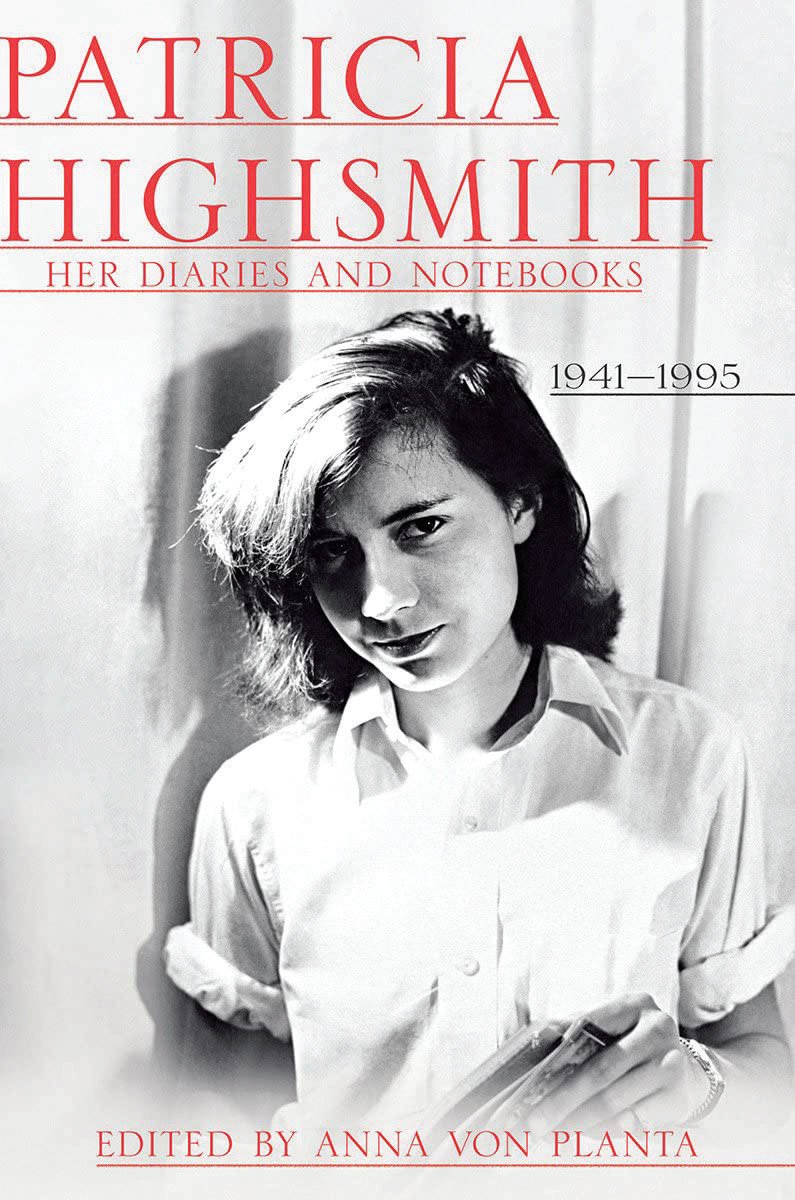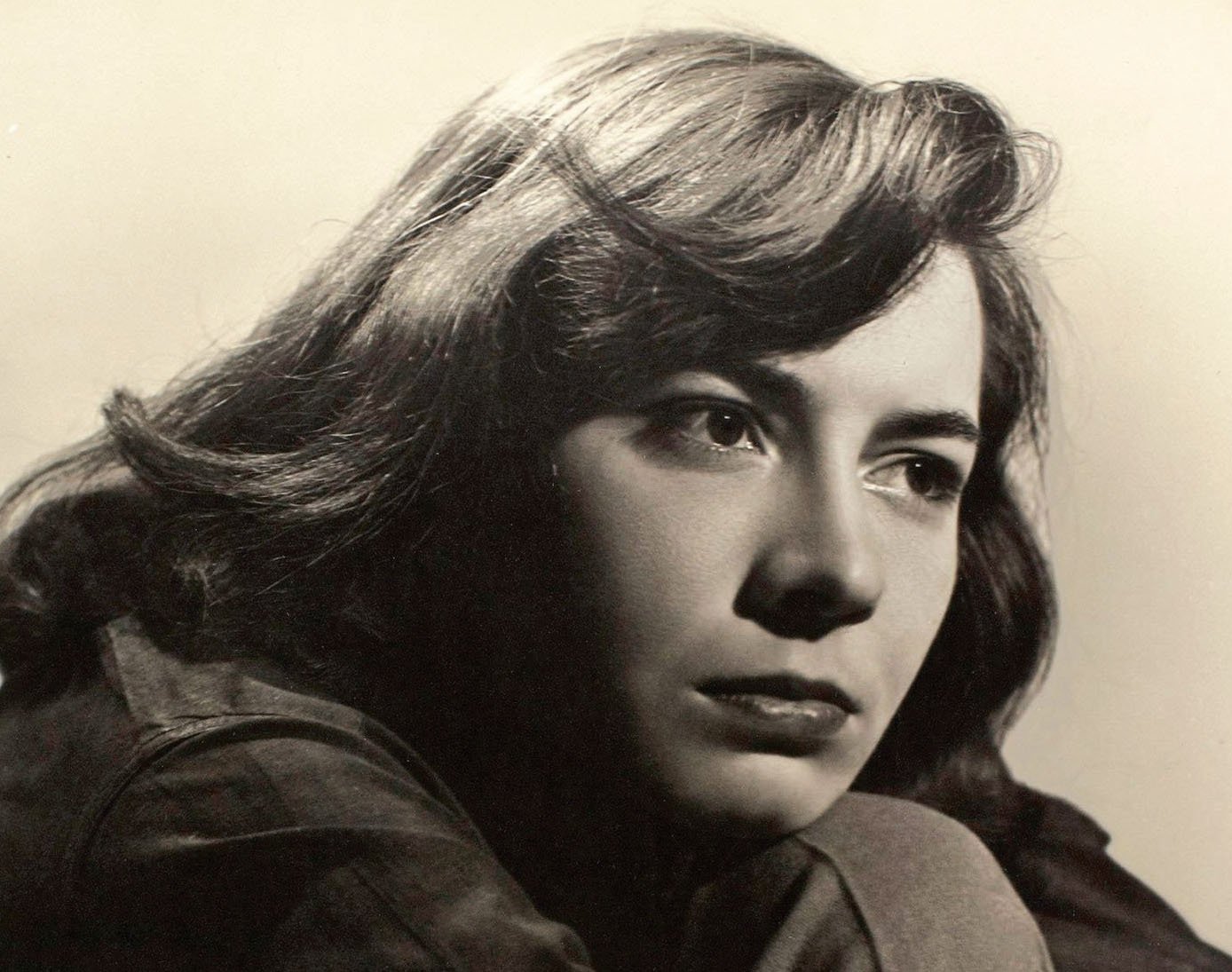
Patricia Highsmith’s novels—often psychological thrillers with queer themes—were a master class in the twisted human emotions that lurk beneath the surface of social respectability. A talented painter and illustrator, she often alerted readers to the hidden malevolence of her characters with a simple, visual detail. Architect Guy Haines spots a debonair stranger on the train with “a huge pimple in the exact center of his forehead” on the first page of Strangers on a Train. The man with the boil is Charles Anthony Bruno, who will soon murder Guy’s slatternly wife.
Strangers on a Train, published in 1950, marked Highsmith’s very successful debut after a decade of hard work and determined literary networking. Its 1951 Alfred Hitchcock film adaptation made Highsmith a literary household name. Although she had fallow periods—often when one of her many love affairs with women was dissolving—Highsmith was astonishingly productive for the next half century. When she died on February 4, 1995, expatriated in Switzerland, she left behind twenty-two published novels, four other books (one for children), and nine volumes of collected short stories. Her written work led to dozens of adaptations for television, film, and radio, some scripted by Highsmith herself.
Now Highsmith fans have (some) access to a lifetime of private, unpublished writing, assembled by Highsmith’s editor, Anna von Planta. Patricia Highsmith: Her Diaries and Notebooks, 1941–1995 is culled from handwritten diaries where Highsmith wrote about her social life, family, work, and love affairs, and a parallel set of notebooks which she devoted to the task of becoming a writer. “Condensing an estimated eight thousand pages into one volume and doing justice to the material was an immense challenge,” von Planta writes. No kidding. Eight thousand handwritten pages, written in five different languages, had to be transcribed, translated into English, and then reduced to a “manageable” one thousand print pages. The mere 15 percent represented in the volume is astonishing, not only because of its value as literary history but also as an account of a woman exploring the complexities of her queerness (Highsmith uses the word queer as an ungendered synonym for homosexual) in Manhattan’s midcentury bohemia.
During her early years, Highsmith was a relentless social climber. Between 1938 and 1942, as a Barnard College student, she succeeded in being taken up by Manhattan’s lesbian artistic elite through an affair with a bookstore owner. The group included well-known artists and writers like
Berenice Abbott, Betty Parsons, Jane Bowles, Djuna Barnes, Janet Flanner, and Rosalind Constable, an editor at Time, who became both muse and mentor to Highsmith, a young, ambitious writer. It was a social circle that was both closeted and relatively free from persecution due to money, professional success, and the occasional gay husband who could shield a lesbian from social scrutiny (and vice versa). It is not surprising that Highsmith’s genius as a novelist revolved around the promise and perils of people who lived double lives.
As she entered the Greenwich Village bar and restaurant scene, where many of these women socialized, Highsmith began to drink heavily, which undoubtedly fueled her uninhibited sexual exploits but also made it difficult for her to navigate the intimate relationships she craved. Often plagued by hangovers and spending the little money she had on booze, Highsmith consciously linked her drinking to a tradition of accomplished, alcoholic male writers. “A person with an imaginative, complex, and complicating mind needs often the effects of alcohol to let him see the truth, the simplicity, and the primitive emotions once more,” she wrote in her twenties. The him in that sentence is, of course, her.

As a young person, Highsmith catalogued her alcohol intake: she loved drinking and worried that she loved it too much. Gin was her poison and martinis her signature drink. “We had a few, about 4 martinis,” Highsmith wrote about a 1941 lunch. “Phoned Helen secretly after martinis & champagne,” she noted about a raucous evening with Constable. The martinis always came in multiples, often interspersed with wine and beer, and sometimes began at lunch and continued into the wee hours of the morning. Once, at least, an evening of martinis followed a day in bed with a girl and a bottle of gin.
By the 1950s, Highsmith stopped worrying and, except for a few periods in which romantic partners pressured her to cut back, accepted her alcoholism. “The agreeableness of foreign countries is very much like the common anodyne of escaping, particularly suited to an alcoholic temperament,” she wrote in 1951, when she used the money from Strangers on a Train to fund the first of many prolonged exits from the United States. “Look at myself,” she said, noting the relief of “remoteness” that alcohol induced. And a year later: “The alcoholic writer—He drinks when he has to face people and the noisy, blatant, obvious world.”
Highsmith’s continuous commentary on gender is the central thread of this volume, and it doesn’t take long to figure out that she is living in what queer studies scholar Jack Halberstam calls “female masculinity.” The plot of an early short story, published in Barnard College’s literary magazine, revolves around a boy raised by nuns as a girl. As summarized by editor Anna von Planta, “The boy is convinced he’s a genius,” much like Highsmith considered herself, “and at age thirteen blows up the convent to live as a man, without religion, and pursue what he believes is his destined path to greatness.”
Highsmith, a keen student of marriage, also had plenty of opportunities to observe husbands, as many of her lovers had them. By her early twenties, Highsmith saw herself in that role. “I got ready like a husband,” she wrote in her diary, anticipating a lover’s arrival, and later wrote that she wanted this woman “like a husband wants his wife.” Thinking about another lover was so arousing that Highsmith went to the bathroom at her office “to relieve myself of a large erection. Is that disgusting? Am I a psychopath?”
In the notebooks where Highsmith mused about the nature of creativity and sketched out story ideas and character, she resolutely refused to portray herself as a woman. Instead, “the artist” is inevitably male (“This is the God in the artist which makes him a god”) or an ungendered subject (“When one is at one’s leisure, thoughts flow like beautiful water.”) Cataloguing her various miseries on February 21, 1948, Highsmith came right out with it: “I want to change my sex. Is that possible?”
Highsmith’s genius revolved around the promise and perils of people who lived double lives.
It wasn’t exactly possible. Or perhaps it was, but Highsmith would have to trade away her dearest dream: to be a famous literary figure. She could not, as a writer could today, continue to be Pat Highsmith, up-and-coming literary star, and become a man or even a butch lesbian. In 1952, her second novel, The Price of Salt, featured a lesbian love story with (gasp!) a happy ending. Highsmith’s friends felt exposed by it, and her agent insisted that she use a pen name, Claire Morgan, to preserve her marketability as an author. It wasn’t until 1990 that it was republished and retitled Carol, with Highsmith listed as the author.
Much as her editor lets the evidence about drinking speak for itself but never uses the word alcoholism, von Planta has little to say about trans identity. Just one hundred and fifty pages from the end, in a discussion about Highsmith’s Little Tales of Misogyny (1975), von Planta remarks that the “way Pat writes about women in her notes for this book suggests that she does not identify as a woman herself.”
It isn’t altogether clear that Highsmith ever came to identify as a proper adult, either, which, along with the queerness of her work, was part of her enduring attraction as she aged and became part of the American literary establishment. A notebook entry in November 1973, for example, muses on how children might seek revenge on adults using common household items. “Little Crimes for Little Tots” suggests “setting careful fires, so that someone else will get the blame, if possible,” and notes that “colorless poison” can be added to a gin bottle.
These private musings, often scribbled down in the wee hours of the morning, are windows. Through them, I spy an ambitious darling of the Greenwich Village queer bar scene, stealing kisses from glamourous older women; the dark talent behind the agreeable psychopath Tom Ripley; and a boorish anti-Semite living alone in a house on a Swiss mountain. Anna von Planta is very careful to say that this edited collection should not be read as an autobiography—but it makes this Highsmith fan eager to see a talented biographer dig into this rich and compelling archive.

